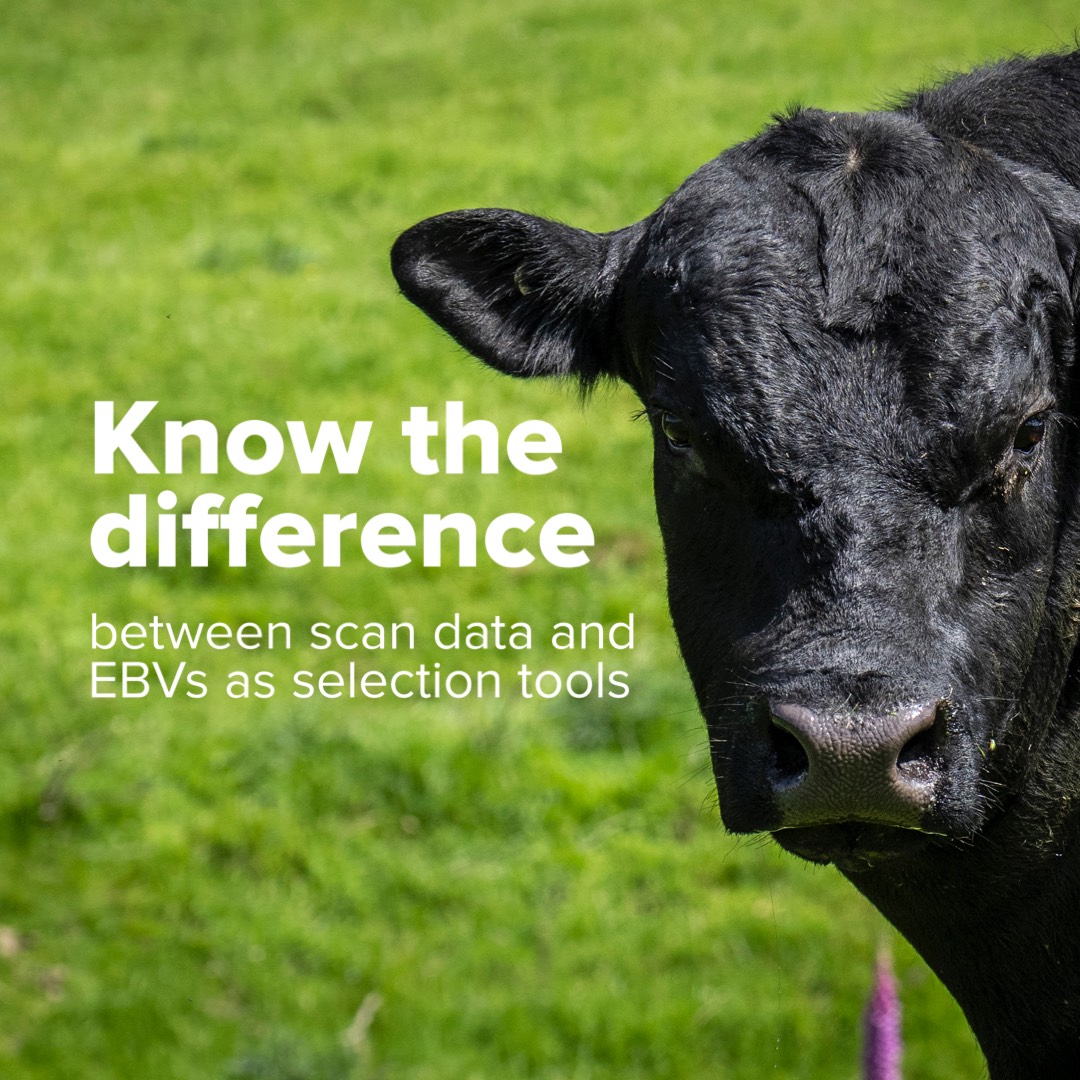Credits: Beef Central, Genetics editor: Alastair Rayner
SINCE the mid 1990s when ultrasound data became more commonly available, the number of animals scanned and presented with data at sales, shows and other occasions has become immense.
In the Angus Breed alone, a recent paper published in the American Society of Animal Science identified more than 640,000 animals as being scanned and recorded in the Angus Australia Database.

Without doubt, scanning for the production traits of eye muscle area, subcutaneous fatness and marbling have vastly improved the ability of producers to identify and select superior genetics. The use of trained and accredited scanners to record and enter data into programs such as BreedPlan has been a crucial part of the ongoing improvement in accuracy of genetic information for animals in most breeds.
However, it is equally important to remember that ultrasound scanning data has to be considered and understood within context. As raw data collected crush-side, the information available only shows how animals that are measured at them same time, from a contemporary group have performed against each other.
While that data may look impressive, it is not possible to compare the data collected against the breed average or even against other groups of animals run in a different environment within one property.
It’s always important to bear in mind that the phenotype of an animal – its physical appearance – is a direct function of its genetic potential and the influence of its environment. How an animal appears may not always accurately reflect the genetic potential of its progeny.
Raw data, either through scanning or simply weighing, is the collection of the current phenotype of the animal. Until that data is used as part of a broader analysis, then its use is limited to a comparison of similar animals at that location and at that time.
Carcase competition experience
Following a recent carcase competition, the risks of trying to use raw scan data as a prediction of progeny performance was highlighted to a group of Queensland cattle producers. The animals in question had been bred by a bull that was listed in the sale catalogue as having the largest EMA in the draft. However his progeny when they were eventually finished and sent into the competition were found to be among the group with the smallest EMAs in the competition.
While these are understandable reactions, they are incorrect on both accounts, and highlight the fact many producers confuse raw data with an EBV.
The almost immediate reactions were firstly that somehow the carcase data had to be wrong, as the animals were sired by an animal with a large EMA. The close second reaction was to suggest the scan was wrong and inaccurate.
While these are understandable reactions, they are incorrect on both accounts, and highlight the fact many producers confuse raw data with an EBV.
It may well have been correct that the bull which sired those animals did have the largest EMA when scanned. However, all that scan data shows are the result of the interaction of that bull’s genetics and environment. The scan data doesn’t really allow for any insights into the genetic potential that bull had to change the EMA of any progeny.
So much depends not only on the genetics of the sire, but also on the genetics of the cows that bull was then joined to. It can be possible that a raw measurement may be the largest in a group, but across a breed, when analysed and compared against more data as part of a BREEDPLAN analysis, that this was a one-off.
And in fact the animal may well be genetically average for this trait. It’s just that as an individual in that environment, the bull was able to express a larger EMA than his contemporaries.
Where that bull then fits, either above, on par or below average is the first half of the equation. As a bull contributes half of a calf’s genetics, the genetics of its dam are also a key factor in the eventual carcase result. If those cows were genetically average, or even below average, this has a direct impact on how much change a bull can have.
And finally there is also the impact of the environment those calves were raised in ahead of their entry into a carcase competition.
At the time, my message to the breeders and producers is not to start blaming the scanner or the grader. Rather the issue comes back to what information was used to make that breeding decision.
Using raw scans for more than looking at how animals may grow and exhibit traits in a particular environment, increases the risk for producers to select the wrong animals. Using that data, without knowing what needs to be corrected in the breeding herd at home is an even greater risk.
It is also worth remembering that carcase competition data is also data that is effectively raw data from a single point in time. The results of a single competition alone shouldn’t be seen as the signal to change an entire program.
However, if the data can be included with other data collected on-farm and from carcase feedback from commercial sales, a trend may start to emerge of the areas where herds need to improve. If these traits are to be corrected or improved, a more reliable indicator is to use EBVs that have high accuracy. In the longer term this process is likely to be more effective in achieving the progeny outcomes a program has in mind.

Alastair Rayner is the Principal of RaynerAg, an agricultural advisory service based in NSW. RaynerAg is affiliated with BJA Stock Station Agents. He regularly lists and sell cattle for clients as well attending bull sales to support client purchases. Alastair provides pre-sale selections and classifications for seedstock producers in NSW, Qld and Victoria. He can be contacted here or through his website www.raynerag.com.au


